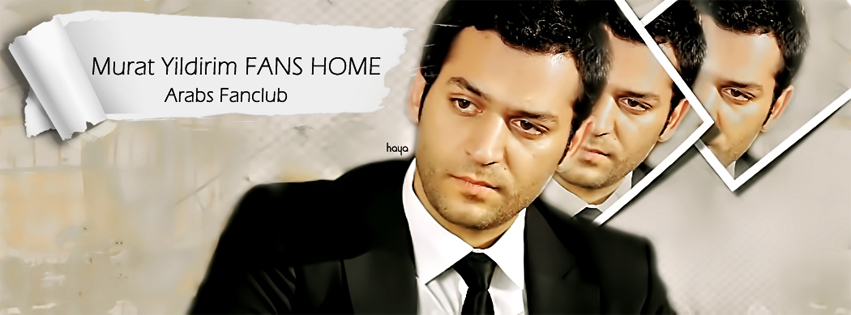رحلتنا اليوم الي 
 آيا صوفيا كاتدرائية سابقة ومسجد سابق وحاليا متحف يقع بمدينة إسطنبول بتركيا.
آيا صوفيا كاتدرائية سابقة ومسجد سابق وحاليا متحف يقع بمدينة إسطنبول بتركيا.

 آيا صوفيا كاتدرائية سابقة ومسجد سابق وحاليا متحف يقع بمدينة إسطنبول بتركيا.
آيا صوفيا كاتدرائية سابقة ومسجد سابق وحاليا متحف يقع بمدينة إسطنبول بتركيا.آيا صوفيا هي كاتدرائية سابقة ومسجد سابق وحاليا متحف يقع بمدينة إسطنبول بتركيا.و تعد من أبرز الأمثلة على العمارة البيزنطية والزخرفة العثمانية.
بدأ الإمبراطور جستنيان في بناء هذه الكنيسة عام 532م، وأستغرق بنائها حوالي خمس سنوات حيث تم أفتتاحها رسمياً عام 537م، ولم يشأ جستتيان أن يبني كنيسة على الطراز المألوف بل كان دائما يميل إلى ابتكار الجديد. فكلف المهندسين المعماريين «إيسودور الميليسي» (باليونانية: Ισίδωρος ο Μιλήσιος) و«أنثيميوس التراليني» (باليونانية: Ἀνθέμιος ὁ Τραλλιανός) ببناء هذا الصرح الدينى الضخم وكلاهما من آسيا الصغرى ويعد ذلك دليلا واضحا على مدى تقدم دارسي البناء في آسيا الصغرى في عهد جستنيان بحيث لم يعد هناك ما يدعو إلى استدعاء مهندسين من روما لإقامة المباني البيزنطية.
Hagia Sophia (from the Greek: Ἁγία Σοφία, "Holy Wisdom"; Latin: Sancta Sophia or Sancta Sapientia; Turkish: Ayasofya) is a former Orthodox patriarchal basilica, later a mosque, and now a museum in Istanbul, Turkey. From the date of its dedication in 360 until 1453, it served as the Greek Patriarchal cathedral of Constantinople, except between 1204 and 1261, when it was converted to a Roman Catholic cathedral under the Latin Patriarch of Constantinople of the Western Crusader established Latin Empire. The building was a mosque from 29 May 1453 until 1931, when it was secularized. It was opened as a museum on 1 February 1935.[1]
The Church was dedicated to the Logos, the second person of the Holy Trinity,[2] its dedication feast taking place on 25 December, the anniversary of the Birth of the incarnation of the Logos in Christ.[2] Although it is sometimes referred to as Sancta Sophia (as though it were named after Saint Sophia), sophia is the phonetic spelling in Latin of the Greek word for wisdom – the full name in Greek being Ναός τῆς Ἁγίας τοῦ Θεοῦ Σοφίας, "Church of the Holy Wisdom of God".[3][4]
Famous in particular for its massive dome, it is considered the epitome of Byzantine architecture[5] and is said to have "changed the history of architecture."[6] It was the largest cathedral in the world for nearly a thousand years, until Seville Cathedral was completed in 1520. The current building was originally constructed as a church between 532 and 537 on the orders of the Byzantine Emperor Justinian and was the third Church of the Holy Wisdom to occupy the site, the previous two having both been destroyed by rioters. It was designed by the Greek scientists Isidore of Miletus, a physicist, and Anthemius of Tralles, a mathematician.[7]
The church contained a large collection of holy relics and featured, among other things, a 49-foot (15 m) silver iconostasis. It was the seat of the Patriarch of Constantinople and the religious focal point of the Eastern Orthodox Church for nearly one thousand years. It is the church in which Cardinal Humbert in 1054 excommunicated Michael I Cerularius – which is commonly considered the start of the Great Schism.
In 1453, Constantinople was conquered by the Ottoman Turks under Sultan Mehmed II, who subsequently ordered the building converted into a mosque.[8] The bells, altar, iconostasis, and sacrificial vessels were removed and many of the mosaics were plastered over. Islamic features – such as the mihrab, minbar, and four minarets – were added while in the possession of the Ottomans. It remained a mosque until 1931 when it was closed to the public for four years. It was re-opened in 1935 as a museum by the Republic of Turkey.
For almost 500 years the principal mosque of Istanbul, Hagia Sophia served as a model for many other Ottoman mosques, such as the Sultan Ahmed Mosque (Blue Mosque of Istanbul), the Şehzade Mosque, the Süleymaniye Mosque, the Rüstem Pasha Mosque and the Kılıç Ali Paşa Mosque.
خلفية تاريخية
لقطة داخلية للقبة ويظهر بها الزخارف الإسلامية التي صنعت أثناء الوجود العثماني آنذاك.
آيا صوفيا هذا الصرح الفني الرائع موجود في منطقة السلطان أحمد بالقرب من جامع السلطان أحمد كان صرح آيا صوفيا على مدار 916 عام كتدرائية ولمدة 481 عام مسجداً ومنذ عام 1935 أصبح متحفاً وهو من أهم التحف المعمارية في التاريخ. آيا صوفيا ككنيسة بنيت على أنقاض كنيسة أقدم أقامها الأمبراطور قسطنطين العظيم وأنتهت في عام 360 في عهد الأمبراطور قسطنطينوس الثاني وسمي في البداية ميغالي أكليسيا أي (الكنيسة الكبيرة) ثم سمي بعد القرن الخامس هاغيا صوفيا أي (مكان العلم المقدس) هذا ماتعنيه تسمية آيا صوفيا. هذا البناء ذو المخطط الكتدرائي ذو السقف الخشبي كان بناء آيا صوفيا الأول الذي أحترق في إحدى حركات التمرد ولم يبقى منه شيئاً، مما جعل الإمبراطور تيودوروس الثاني يقوم في بنائها ثانيتاً ويفتتحه للعبادة عام 415. ومن المعروف أن آيا صوفيا الثاني أيضاً كان ذات مخطط كتدرائي وجدران حجرية وسقف خشبي، وقد تم أكتشاف بعض بقايا هذا البناء في الحفريات التي قام بها البروفيسور أ.م.سنايدر عام 1936 حيث عثر على بقايا درج المدخل وأحجارالواجهة والأعمدة وتيجان الأعمدة وقواعد الأعمدة والتزيينات والأفاريز وهي موجودة اليوم في حديقة آيا صوفيا وأسفل المدخل. أن قدر قلعة آيا صوفيا الثاني لم يكن بأفضل من سابقه أذ أنه أحترق تماماً أثناء حركة التمرد الذي أشتعلت شرارته الأولى في مضمار آيا صوفيا عام 532م.
لبناء الثالث لآيا صوفيا
بعد الحريق الثاني الذي قضى على آيا صوفيا ثانيتاً قرر الأمبراطور أيوستينيانوس الثاني (527-565)م أن يبني بناء أكبر وأعظم لآيا صوفيا فكلف أشهر معماريي العصر في ذلك الوقت وهم أيسيدروس الميليتوس وأنتيميوس الترالليسي ببنائه.والصرح القائم في يومنا هذا هو الصرح الذي بنية المرة الثالثة الذي طالت مدة بنائه منذ 532 إلى 537 م أي خمسة سنوات متتالية من دون الأنتهاء من الزخارف. وأفتتح للعبادة عام 537 م أن صرح آيا صوفيا الحالي يرى الناظر له بجلاء الخطوط الأساسية لفن العمارة البيزنطية المبكرة وكذلك تقاليد العمارة الرومانية بالأضافة للبصمة الشرقية والفن الشرقي. أن صرح آيا صوفيا يعبر لناظره للوهلة الأولى تزاوج الفن المعماري الروماني بالإسلامي مما يجعله تحفه نادرة من التحف المعمارية التي تتوسط مدينة إسطنبول التركية.
History
[edit]First church
The first church was known as the Μεγάλη Ἐκκλησία (Megálē Ekklēsíā, "Great Church"), or in Latin "Magna Ecclesia",[9] because of its larger dimensions in comparison to the contemporary churches in the City.[2] Inaugurated on 15 February 360 (during the reign of Constantius II) by the Arian bishop Eudoxius of Antioch,[10] it was built next to the area where the imperial palace was being developed. The nearby Hagia Eirene ("Holy Peace") church was completed earlier and served as cathedral until the Hagia Sophia was completed. Both churches acted together as the principal churches of the Byzantine Empire.
Writing in 440, Socrates of Constantinople claimed that the church was built by Constantius II, who was working on it in 346.[10] A tradition which is not older than the 7th – 8th century, reports that the edifice was built by Constantine the Great.[10] Zonaras reconciles the two opinions, writing that Constantius had repaired the edifice consecrated by Eusebius of Nicomedia, after it had collapsed.[10] Since Eusebius was bishop of Constantinople from 339 to 341, and Constantine died in 337, it seems possible that the first church was erected by the latter.[10] The edifice was built as a traditional Latin colonnaded basilica with galleries and a wooden roof. It was preceded by an atrium. It was claimed to be one of the world's most outstanding monuments at the time.
The Patriarch of Constantinople John Chrysostom came into a conflict with Empress Aelia Eudoxia, wife of the emperor Arcadius, and was sent into exile on 20 June 404. During the subsequent riots, this first church was largely burned down.[10] Nothing remains of the first church today.
[edit]Second church
Stone remains of the basilica ordered by Theodosius II, showing the Lamb of God
Marble blocks from the second church
A second church was ordered by Theodosius II, who inaugurated it on 10 October 415. The basilica with a wooden roof was built by architect Rufinus. A fire started during the tumult of the Nika Revolt and burned the second Hagia Sophia to the ground on 13–14 January 532
Several marble blocks from the second church survive to the present; among them are reliefs depicting 12 lambs representing the 12 apostles. Originally part of a monumental front entrance, they now reside in an excavation pit adjacent to the museum's entrance. Discovered in 1935 beneath the western courtyard by A. M. Schneider, further digging was forsaken for fear of impinging on the integrity of the Hagia Sophia.
كان بناء كنيسة أيا صوفيا على طراز الباسيليكا المقبب ويبلغ طول هذا المبنى الضخم 100 متر وارتفاع القبة 55 متر أي انها أعلى من قبة معبد البانثيون، ويبلغ قطر القبة 30 متر.
وتعتبر قبة مسجد آيا صوفيا رائعة الجمال والتطور في ذلك الوقت فقد كانت قبة ضخمة ليس لها مثيل من قبل تبدو كأنها معلقة في الهواء، وكان ذلك امرا طبيعيا إلى حد بعيد فقد أصبح لدى المهندس البيزنطيى القدرة والخبرة القديمة الواسعة والمعرفة لابتكار ما هو ملفت وجديد. ويصف لنا المؤرخ بروكوبيوس (باللاتينية: Procopius) وهو أحد مؤرخى عصر جستنيان انه من شدة أعجاب جستنيان بالمبنى لم يطلق عليه اسم أي من القديسين بل أطلق عليه اسم الحكمة الالهية أو المقدسة «سان صوفيا» ونقل أيضا عن جستنيان إنه قال "يا سليمان الحكيم لقد تفوقت عليك" ويقصد بذلك انه تفوق ببناءه علي النبي سليمان الحكيم الذي كان يسخر الجن لبناء الأبنية العظيمة.
غير أنه بعد حوالي عشر سنوات فقط من إقامة المبنى تصدع الجزء الشرقى من المبنى نتيجة حدوث هزة ارضية في إسطنبول وسقط جزء كبير من القبة الضخمة فأمر جستنيان بإعادة بنائها مرة أخرى بحيث أصبحت أكثر أرتفاعا من السابقة، وقام بتدعيم الأساسات التي ترسو عليها القبة وهذه هي القبة التي ما زالت قائمة حتى الآن، والتي استطاعت ان تصمد لكافة الأحداث منذ بنائها. وقد استمرت الكنيسة في الاستخدام كمركز للدين المسيحي لفترة طويلة حتى دخول الدين الإسلامي عام 1453 م للقسطنطينية فتمت مصادرتها وتحويلها إلى مسجد على يد السلطان محمد (الفاتح) ابن السلطان عثمان مؤسس الدولة العثمانية ولقب بالفاتح لأنه أكمل حلم والدة وقام بفتح القسطنطينية (أسطنبول حاليا) وأمر بأن يؤذن فيها عندما دخل مدينة القسطنطينية وقام السلطان محمد الفاتح بأداء أول صلاة فيها وهى ركعتين شكر لله على هذا الفتح العظيم ثم أضاف لها المأذن الأربعة حولها والتي تعتبر مأذن إسطوانية الشكل ذات قمة مخروطية والتي اضافت إلى هذا المكان وزادته رونقا وجمالا ولم تؤثر على عمارته البيزنطية وظلت أيا صوفيا مسجداً حتى بداية القرن العشرين حيث قام أتاتورك بتحويل المبنى إلى متحف حتى الآن.
On 23 February 532, only a few days after the destruction of the second basilica, Emperor Justinian I elected to build a third and entirely different basilica, larger and more majestic than its predecessors.
Construction of church depicted in codex Manasses Chronicle
Justinian chose physicist Isidore of Miletus and mathematician Anthemius of Tralles as architects; Anthemius, however, died within the first year of the endeavor. The construction is described in the Byzantine historian Procopius' On Buildings (Peri ktismatōn, Latin: De aedificiis). The emperor had material brought from all over the empire – such as Hellenistic columns from the Temple of Artemis at Ephesus, large stones from quarries in porphyry from Egypt, green marble from Thessaly, black stone from the Bosporus region, and yellow stone from Syria. More than ten thousand people were employed. This new church was contemporaneously recognized as a major work of architecture. The theories of Heron of Alexandria may have been utilized to address the challenges presented by building such an expansive dome over so large a space.[citation needed] The emperor, together with the patriarch Eutychius, inaugurated the new basilica on 27 December 537 with much pomp. The mosaics inside the church were, however, only completed under the reign of Emperor Justin II (565–578).
Hagia Sophia was the seat of the Orthodox patriarch of Constantinople and a principal setting for Byzantine imperial ceremonies, such as coronations. The basilica also offered asylum to wrongdoers.
Earthquakes in August 553 and on 14 December 557 caused cracks in the main dome and eastern half-dome. The main dome collapsed completely during a subsequent earthquake on 7 May 558,[11] destroying the ambon, altar, and ciborium. The crash was due mainly to the too high bearing load and to the enormous shearing load of the dome, which was too flat.[12] These caused the deformation of the piers which sustained the dome.[12] The emperor ordered an immediate restoration. He entrusted it to Isidorus the Younger, nephew of Isidore of Miletus, who used lighter materials and elevated the dome by "30 feet"[12] (about 6.25 metres (20.5 ft)) – giving the building its current interior height of 55.6 metres (182 ft).[13] Moreover, Isidorus changed the dome type, erecting a ribbed dome with pendentives, whose diameter lay between 32.7 and 33.5 m.[12] This reconstruction, giving the church its present 6th-century form, was completed in 562. The Byzantine poet Paul the Silentiary composed a long epic poem (still extant), known as Ekphrasis, for the rededication of the basilica presided over by Patriarch Eutychius on 23 December 562.
In 726, the emperor Leo the Isaurian issued a series of edicts against the veneration of images, ordering the army to destroy all icons – ushering in the period of Byzantine iconoclasm. At that time, all religious pictures and statues were removed from the Hagia Sophia. After a brief reprieve under Empress Irene (797–802), the iconoclasts made a comeback. Emperor Theophilus (829–842) was strongly influenced by Islamic art,[citation needed] which forbids graven images.[clarification needed] He had a two-winged bronze door with his monograms installed at the southern entrance of the church.
The basilica suffered damage, first in a great fire in 859, and again in an earthquake on 8 January 869, that made a half-dome collapse. Emperor Basil I ordered the church repaired.
عمارة المبنى
=-=-=-=-=-=-=-
قطاع رأسي بالمبنى
وقد جمعت كنيسة أيا صوفيا العديد من الافكار المعمارية التي كانت موجودة في ذلك الوقت بل هي تعتبر قمة المعمار البيزنطى في مجال البازيليكات. فالكنيسة مستطيلة الشكل على الطراز البازيليكى بالإضافة إلى وجود القبة في المنتصف على جزء مربع ،و يتقدم المبنى أتريوم ضخم أمامي المحاط بالـ Porticus من الثلاثة جوانب ثم الـ Natthex والـ Esonarthex ثم الصالة الرئيسية Nave والصالات الجانبية Aisles، ترسو فوق الصالة الرئيسية القبة الضخمة التي تستند على المبنى مربع سفلى، أو كانه عبارة عن دعامات ضخمة تحمل فوقها عقود كبيرة تحصر بينهما المقرنصات أو الـ Pendentives التي تحمل قاعدة القبة. وتستند القبة من الشرق والغرب على انصاف قباب ضخمة وترسو بدورها على عقود ودعامات سفلية تخفف الضغط على الحوائط, القبة من الداخل مغطاه بطبقة من الرصاص لحمايتها من العوامل الجوية، وكما سبق ان وضحنا تفتح في اسفلها النوافذ للاضاءة. تقع الحلية في الشرق أيضا وهي مضلعة الشكل في حين ان المعمودية في الجنوب.
ويوجد بالفناء درج يؤدى إلى الطابق العلوى المخصص للسيدات اضيف لهذا المركز الدينى بعد ذلك مجموعة من المبانى الدينية الملحقة به والتي كانت تتصل بطريقة ما بالمبنى الرئيسى، فنجد مجموعة من الكنائس الصغيرة أو Chapelsالتي تحيط بالمبنى والعديد من الحجرات سواء كانت لرجال الدين أو لخدمة أغراض الصلاة.
[عدل]التصميم الداخلي
وكان الاهتمام موجها نحو تجميل المبنى وزخرفة بدرجة كبيرة من الداخل وقد استغل جستنيان جمع إمكانيات الامبراطورية لزخرفة وتزيين المبنى فجزء كبير من الحوائط مغطى بألواح من الرخام بأنواع والوان متعددة، كما زنيت السقوف بمناظر رائعة من الفرسكو والفسيفاء وبالرغم أن معظم المناظر قد غطيت في عصر الخلافة العثمانية الراشدة بطبقات من الجبس ورسم فوقه زخارف هندسية والخط العربى إلا كثيرا من هذه الطبقات سقطت وظهرت المناظر القديمة أسفلها.
[عدل]انظر أيضاً
In his book De caerimoniis aulae Byzantinae ("Book of Ceremonies"), Emperor Constantine VII (913–919) wrote a detailed account of the ceremonies held in the Hagia Sophia by the emperor and the patriarch.
19th Century marker of the tomb of Enrico Dandolo, the Doge of Venice who commanded the Sack of Constantinople in 1204, inside the Hagia Sophia
Upon the capture of Constantinople during the Fourth Crusade, the church was ransacked and desecrated by the Latin Christians. The Byzantine historian Niketas Choniates described the capture of Constantinople; many reputed relics from the church – such as a stone from the tomb of Jesus, the Virgin Mary's milk, the shroud of Jesus, and bones of several saints – were sent to churches in the West and can be seen there now in various museums. During the Latin occupation of Constantinople (1204–1261) the church became a Roman Catholic cathedral. Baldwin I of Constantinople was crowned emperor on 16 May 1204 in Hagia Sophia, at a ceremony which closely followed Byzantine practices. Enrico Dandolo, the Doge of Venice who commanded the sack and invasion of the city by the Latin Crusaders in 1204, is buried inside the church. The tomb inscription carrying his name, which has become a part of the floor decoration, was spat upon by many of the angry Byzantines who recaptured Constantinople in 1261.[citation needed] However, restoration led by the brothers Gaspare and Giuseppe Fossati during the period 1847–1849 cast doubt upon the authenticity of the doge's grave; it is more likely a symbolic memorial rather than burial site.
After the recapture in 1261 by the Byzantines, the church was in a dilapidated state. In 1317, emperor Andronicus II ordered four new buttresses (Πυραμὶδας, Greek:"Piramídas") to be built in the eastern and northern parts of the church, financing them with the inheritance of his deceased wife, Irene.[17] New cracks developed in the dome after the earthquake of October 1344, and several parts of the building collapsed on 19 May 1346; consequently, the church was closed until 1354, when repairs were undertaken by architects Astras and Peralta.
























» murat yildirim biography
» حلقة كوميدية بعنوان Patron kim ?
» صور لقاء مراد مع مجله المرأة اليونانية
» ظهور جديد لمراد يلدريم بورتشين تيرزيوجلو..تفاصيل جميله بالداخل
» لقاء جريده الصباح التركيه مع مراد يلدريم و ايمان الباني
» العشق الاسودج3
» اغاني المطرب مصطفى صندل ....متجدد
» فيلم مراد الجديد